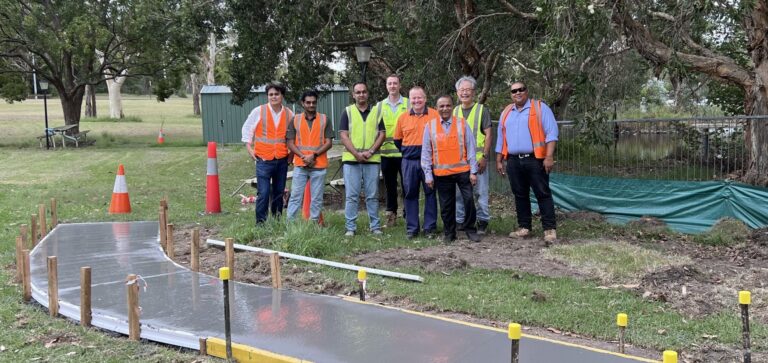5 July 2024
by Chris Sheedy

Key points:
In the fast-changing field of concrete, real change is being engineered at a project level to solve the carbon conundrum.
The biggest and most obvious problem is the lack of definition around what “low-carbon concrete” actually means.
It is vital to understand the two most common types of low-carbon concrete, according to Professor Vute Sirivivatnanon, Research Director at SmartCrete CRC and Professor of Concrete Engineering at the University of Technology Sydney.
“One is basically concrete with supplementary cementitious materials, which also has some Portland cement in it,” Sirivivatnanon explained. “That’s the type of low-carbon concrete that is being used to a large extent right now.”
“The second type is generally called geopolymer concrete. This type basically has zero, or a very low amount of, Portland cement. So, it has much lower embodied carbon than the first one.”
Supplementary cementitious materials (SCMs) such as slag, a byproduct from the smelting of various ores, and fly ash, from the burning of coal in power plants, were first introduced decades ago. They’re essential in today’s low-carbon concrete, and in the geopolymer concrete of the future.
Sirivivatnanon worked with the CSIRO from 1988 until 2006, using SCMs to improve the durability of concrete.
Read the full article, published by Engineers Australia, here.

NewsArticles10 April 2025
Originally published in SAFE Structural And Foundation Engineering Newsletter (Issue 203 Dec 2024), this is a field trial update for...

NewsArticles6 March 2025
Are you an engineer, scientist or other professional woman working with concrete in Australia? We’ve put together this list to...

NewsArticles24 February 2025
Toting their helmets and steel-toed shoes, members of a SmartCrete CRC concrete R&D project team met at a quiet community...

NewsArticles, Interview5 February 2025
As the new chair of SmartCrete CRC’s Community of Practice (Sustainable Concrete), Arun’s take on sectoral sustainability may surprise you....

NewsArticles10 April 2025
Originally published in SAFE Structural And Foundation Engineering Newsletter (Issue 203 Dec 2024), this is a field trial update for...

NewsArticles6 March 2025
Are you an engineer, scientist or other professional woman working with concrete in Australia? We’ve put together this list to...

NewsArticles24 February 2025
Toting their helmets and steel-toed shoes, members of a SmartCrete CRC concrete R&D project team met at a quiet community...

NewsArticles, Interview5 February 2025
As the new chair of SmartCrete CRC’s Community of Practice (Sustainable Concrete), Arun’s take on sectoral sustainability may surprise you....

NewsArticles10 April 2025
Originally published in SAFE Structural And Foundation Engineering Newsletter (Issue 203 Dec 2024), this is a field trial update for...

NewsArticles6 March 2025
Are you an engineer, scientist or other professional woman working with concrete in Australia? We’ve put together this list to...

NewsArticles24 February 2025
Toting their helmets and steel-toed shoes, members of a SmartCrete CRC concrete R&D project team met at a quiet community...

NewsArticles, Interview5 February 2025
As the new chair of SmartCrete CRC’s Community of Practice (Sustainable Concrete), Arun’s take on sectoral sustainability may surprise you....
Notifications
